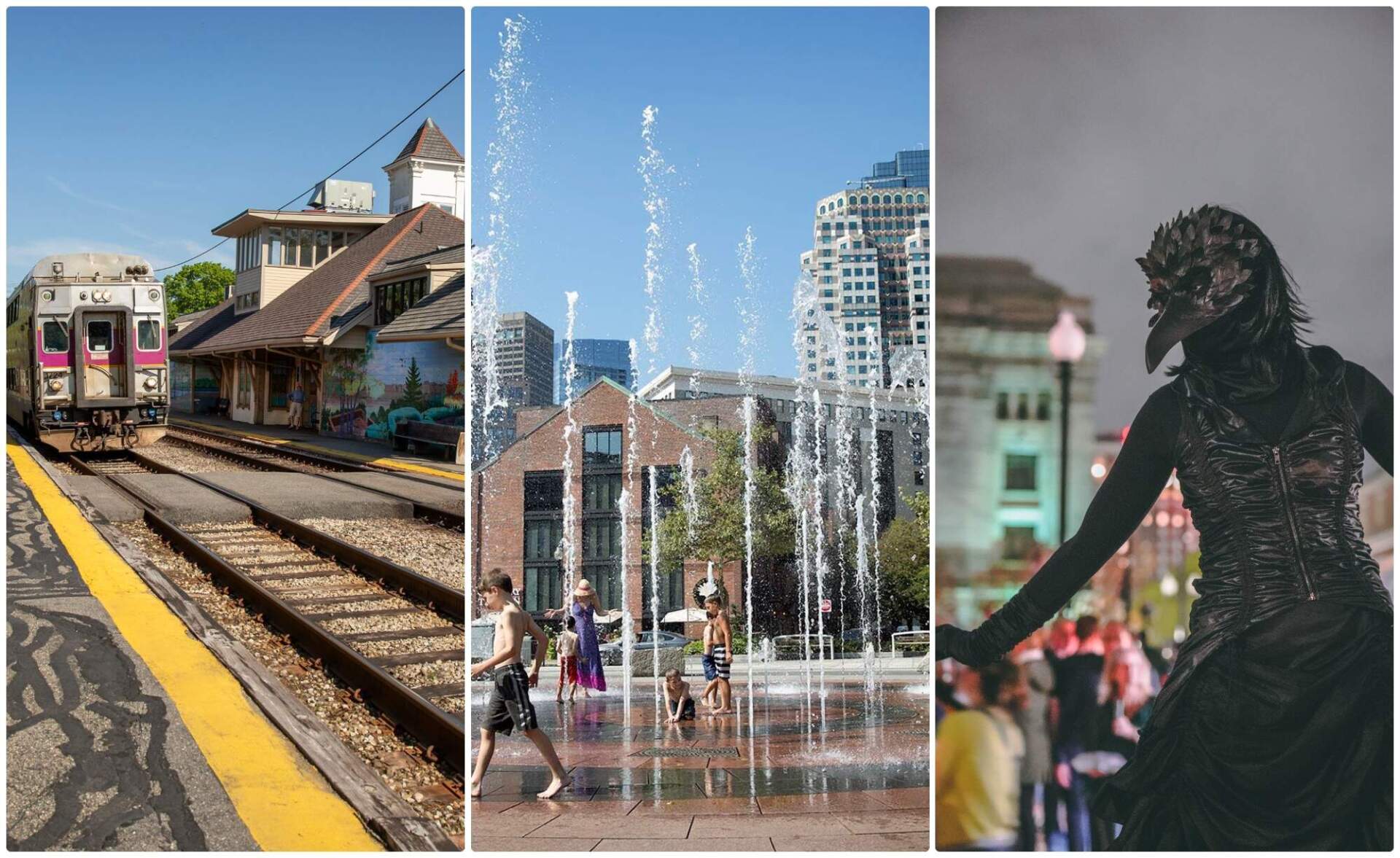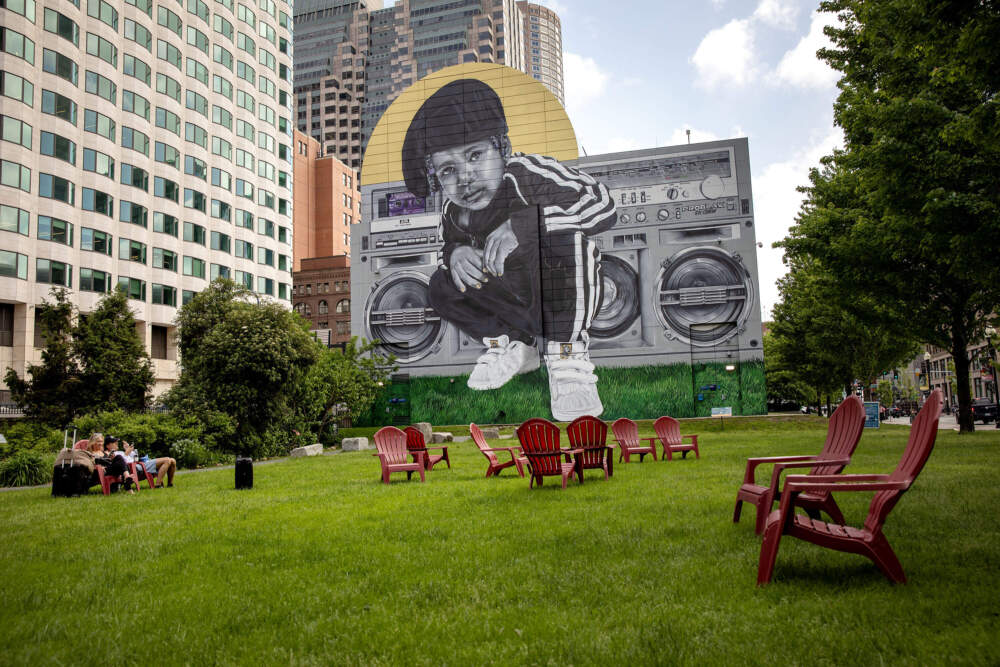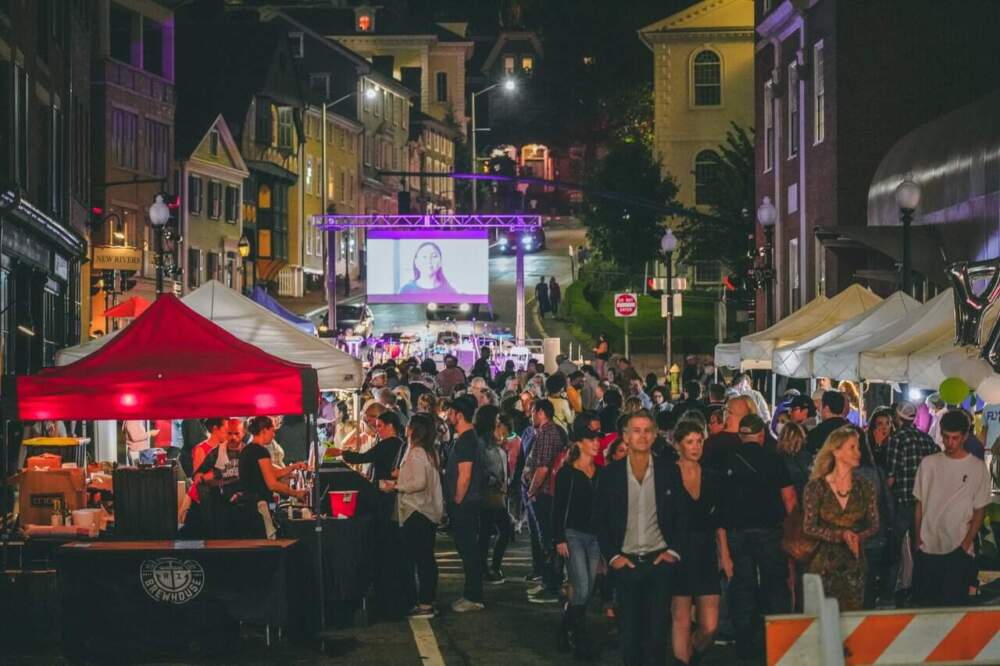Advertisement
commentary
The stuff of summer dreams: My 3-part adventure on the MBTA

Trains are the stuff of dreams. A necklace of rumbling cars pulls into a lonely station, you climb aboard, fork over the fare, and you plunk down by a window to watch the leaves, stones and waters outside the train blur together as you pass between realms. In New England, you used to be able to take the train almost anywhere, from the mill towns of Massachusetts to the middle of the White Mountain National Forest. But since the early 20th century, our conception of rail travel has been stunted by commerce. Today, trains are seen primarily as tools for commuting or hauling freight. Many of the train routes that facilitated recreation and discovery have been lost.
But in Massachusetts, some of these regional connections survive.
When was the last time you looked at a map of the MBTA commuter rail network and thought, “I could take the train there and have a good time?” Did you consider riding the commuter rail to Taylor Swift’s epic concerts at Gillette Stadium last spring? (It was a rare occasion when the commuter rail sold out beyond capacity. ) Have you dreamt of beating traffic by taking the train to a popular swimming hole at the height of summer? Or to a neighboring city with the kind of insurgent art and food scene that has been priced out of Greater Boston?
All of these expeditions are still possible on the MBTA commuter rail lines — a testament to what makes this public transit system the most opportune in New England, despite decades of fiscal neglect by our state leadership and the resultant service disruptions. We live in an increasingly endangered corner of the U.S. where trains can still take you places. And on a recent Saturday, as green stems began emerging from the ground, I decided to go on a three-part adventure.
Part I: The Woods and Waters

Making the most of a day venturing around the MBTA commuter rail system requires getting up earlier than you might prefer. That’s because weekend service is a fraction of what’s offered to riders during the work week. (Once again, the influence of commerce on trains rears its head.) I’m wondering if this was a bad idea as I trudge onto the Orange Line, zombie-like, and make my way to North Station, where I’m going to catch the 7:50 a.m. Fitchburg Line train to Lincoln for a long, savory saunter in the woods. But even before the train starts boarding, I’m struck by how the grinding of metal, the lights of the train departures board, and the aroma of Dunkin Donuts crullers coalesce into a symphony for the senses. Standing here, unencumbered by obligations like work or errands, I’m starting to feel awake already. I’m ready to get out there and get after it.
The Lincoln commuter rail station is a desolate brick building right across the street from a small shopping plaza — a rare commercial hub in a town primarily known for its green space. And from the plaza parking lot, an old dirt road runs past a meadow and enters the woods of the Codman Estate. The trails that spiderweb through this 16-acre preserve are perfectly fine for wandering, but what’s really cool about the Codman paths is how they can be used as a passage to some of the most popular and serene places in Lincoln and Concord. I cross above the train tracks on a wooden bridge, follow a stony path through evergreen conifers, and after briefly walking along a vast wetland on Concord Road, I’m suddenly standing in the fields at Mount Misery, Lincoln’s largest conservation area and sacred ground for forest bathers, dog owners and many more.
Advertisement
Once you crack into the ecosystem of interconnected paths and preserves in towns like Lincoln and Concord, it’s hard to resist going further. Another patchwork of trails through the forests of Mount Misery and nearby Adams Woods leads me to the back end of Walden Pond, which will be splashing with visitors soon. And after getting past Route 2 at a rare pedestrian crossing near the pond entrance, I’m following the Emerson-Thoreau Amble, 1.7-mile trail that runs from Walden Pond to the center of Concord. There’s an intention to my hike. I’m going to try to catch the 11:20 a.m. train from Concord’s station back into Boston. But negotiating a series of wobbling bog bridges in the reedy area behind the fire station slows me down. I miss my link.
Oh well. The next train to Boston is due at 1:20 p.m. It’s a crisp but sunny afternoon. Karma, a Pan-Asian fusion food joint, is right by the train station. Post-hike hamachi rolls and tom yum soup are temptations that you won’t find near most backcountry trails. So I dig in and wait.
Part II: The Missing Link

It’s eight minutes past 2 p.m. when I step back into the familiar din of North Station, but this time I’m just passing through. My next ride — a Providence-bound train — will depart South Station at 4:20 p.m. I’m grateful for the wide window to get over there, because as of 2023, there’s still no direct rail connection between North and South stations. And not due to lack of advocacy from transit legends like former governor Michael Dukakis. (“We’re located on a 457-mile rail corridor stretching from Washington, D.C., to Portland, Maine, and there’s a one-mile gap in the middle of it, between North and South stations,” Dukakis told me in 2022 when speaking for a Boston Globe story.) On a weekday, getting to South Station to make a connection can be a sweaty hassle.
But on the weekend, I have time to take and appreciate the scenic route — the Rose Kennedy Greenway, with its sculptures and reawakening gardens. I also have time to visit a coffee shop to reanimate with an espresso and duck into the bathroom to change out of my hiking clothes and into some sharper duds I’ve stashed in my daypack — an outfit more fitting for what awaits in Providence, as I sharply crank the adventure dial from rustic to urban.
Part III: The Sister City

No adventure contained within one day can showcase the totality of a region, but on the ride to Providence, the passengers seated near me speak to the more hedonistic side of New England. There’s a young couple making out, a 50-year-old gentleman in leather pants and another rider with an unusually stoic chihuahua sitting on her lap. They may just be heading home for the day, but I decide to assume they’re also heading south for some nocturnal gallivanting. The clientele at Rooftop at the Providence G —my first stop after arriving in town at 5:33 p.m. — is similarly garbed, nursing their cocktails and audibly flirting against the backdrop of sundown in the city center.
By nightfall, I’m walking the cobblestone paths on the Providence River, which will be aglow with the torches of the WaterFire festival this summer. My plan is to grab another beer or two at the Hot Club, the well-seasoned waterside bar that overlooks the towering smokestacks of the Manchester Street Generating Station. Then I’ll balance things out with a couple blue oyster mushroom tacos at Plant City before wandering back into downtown and seeing what else I can get up to before the last train of the night leaves for Boston at 11:25 p.m. As with any commuter rail adventure, departure times can nix some aspirations. I won’t be clubbing at Alchemy tonight or taking in a jazz show at the Music Mansion. But riding the trails with an explorer’s eye can still expand your scope of what’s out there and yield ideas for return visits, by train or other means.
That’s the beauty of public transportation like the MBTA commuter rail. For all its shortcomings (many of which are finally being fixed), the MBTA remains a viable gateway to places beyond what’s predictable and familiar. As a kid growing up in a conservative Boston suburb, riding the train into the city opened up the world to me. Now, over 20 years later, I regularly take the train out of Boston to remind myself of what’s possible in this little nook of America. You should try it, too.
